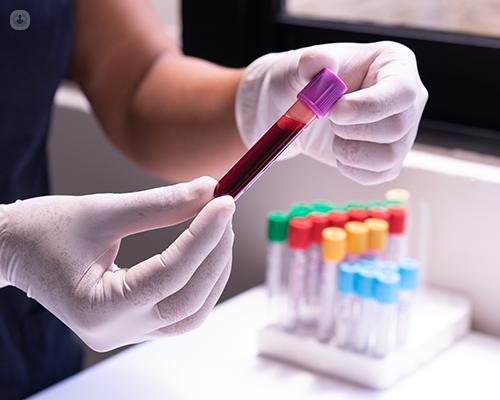Anti-Müllerian hormone
What is analysed?
Anti-Müllerian hormone (AMH) is a glycoprotein hormone produced within the follicles inside the ovaries that plays a central role in ovarian follicle development. AMH levels serve as an indicator of a woman’s ovarian reserve (number of eggs remaining in the ovaries).
The AMH test measures AMH levels in the blood in order to estimate the total number of follicles inside the ovaries and from there, calculate the ovarian reserve.

What does the result mean?
The result indicates the concentration of AMH in the blood.
Why conduct the analysis?
The AMH test is conducted to evaluate a woman’s ovarian reserve and provide insights into her fertility.
When to conduct the analysis?
The AMH test may be conducted when planning a natural conception, when planning fertility treatments such as in vitro fertilisation, or when planning fertility preservation options. In some cases, the analysis may also be conducted when polycystic ovary syndrome (PCOS) is suspected.
What sample is required?
A blood sample is used for the analysis of AMH levels. The blood is drawn from a vein, usually in the arm.
Is any prior preparation necessary?
Patients should fast for 8-12 hours before the blood sample is taken. AMH levels stay consistent throughout the menstrual cycle, so the AMH test can be taken at any time during the month.
How is it performed?
The collected blood sample is sent to a laboratory, where it is analysed using immunoassay techniques to quantify AMH levels in the blood.
What are the normal values?
| Age group | Normal AMH levels (ng/mL) |
|---|---|
| 20-29 | 1.5 - 4.0 |
| 30-34 | 1.0 - 3.3 |
| 35-39 | 0.5 - 2.5 |
| 40-44 | 0.3 - 1.5 |
The AMH test provides an insight into a woman’s ovarian reserve at the time of the test. The test, however, doesn’t predict the ability to get pregnant naturally in the future. Even if current results show ‘normal’ values, these levels may change over time as fertility declines with age.
What does having altered values mean?
- Elevated levels: Raised AMH levels indicate an increased ovarian reserve, which can indicate PCOS or ovarian over-stimulation.
- Low levels: Low AMH levels indicate a reduced ovarian reserve, which can indicate that the ovaries may not respond to fertility treatments. This doesn’t necessarily mean that a woman won’t be able to get pregnant without assisted reproductive technologies – but it suggest that getting pregnant may be more challenging.